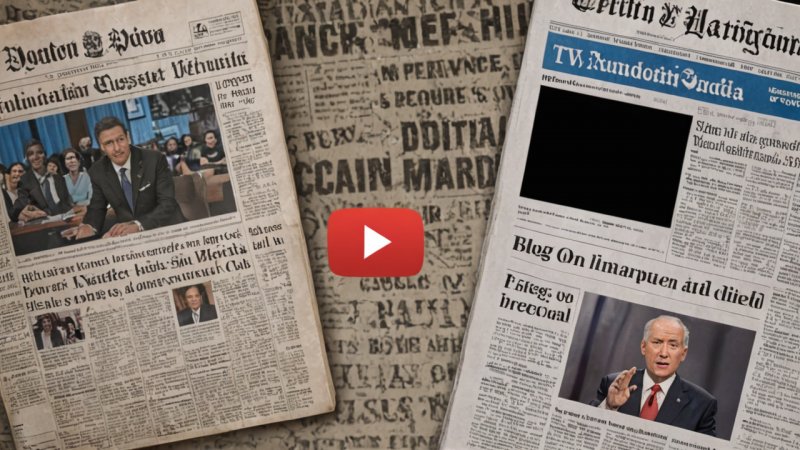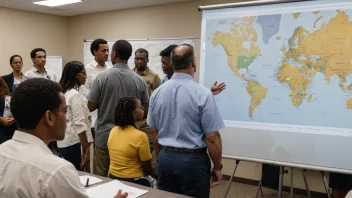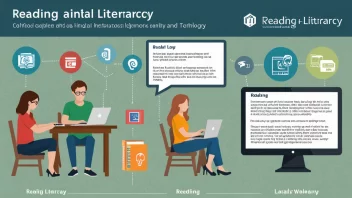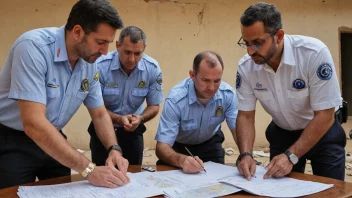The portrayal of humanitarian issues in the media plays a critical role in shaping public perceptions and responses. Traditional media, including newspapers, television, and radio, has long been the primary source of information for many people. However, the rise of digital media, encompassing social media platforms, blogs, and online news outlets, has transformed the landscape of information dissemination. This article compares the influence of traditional and digital media on humanitarian issues, examining their respective strengths, weaknesses, and overall impact on public engagement and awareness.
Accessibility and Reach
One of the most significant differences between traditional and digital media is accessibility. Traditional media often has geographical and demographic limitations, whereas digital media has a global reach.
Traditional Media
Traditional media outlets are often restricted by distribution capabilities. Newspapers may only circulate locally, and television broadcasts are limited to specific regions. While they can reach a broad audience, the impact is often confined to certain demographics, which may not include marginalized communities.
Digital Media
In contrast, digital media platforms are accessible to anyone with an internet connection. Social media, blogs, and online news sites can disseminate information rapidly and widely, allowing voices from various backgrounds to be heard. This inclusivity can lead to increased awareness of humanitarian issues that might otherwise be overlooked.
Timeliness and Speed of Reporting
The speed at which information is reported is crucial, especially in humanitarian crises where timely awareness can mobilize aid.
Traditional Media
Traditional media often has a slower reporting cycle due to editorial processes and the need for fact-checking. While this can enhance credibility, it can also mean that urgent issues may be reported late, reducing the opportunity for immediate action.
Digital Media
Digital media excels in real-time reporting. Social media platforms like Twitter and Facebook allow users to share updates as events unfold, often before mainstream outlets can cover them. This immediacy can galvanize public support and action, but it can also lead to the spread of misinformation if not properly vetted.
Framing and Narrative Construction
The way humanitarian issues are framed in the media can significantly affect public perception and response.
Traditional Media
Traditional media tends to adopt a more formal tone, often relying on expert opinions and structured narratives. While this can lend credibility, it may also create a distance between the audience and the issues being reported, leading to a lack of emotional engagement.
Digital Media
Digital media allows for more personal narratives and grassroots storytelling. Platforms like Instagram and TikTok enable individuals affected by humanitarian issues to share their experiences directly, fostering a sense of connection and urgency. This can lead to greater empathy and a willingness to act.
Engagement and Interaction
Engagement with audiences is crucial for driving action in humanitarian efforts.
Traditional Media
Engagement with traditional media is largely one-sided, where audiences consume content without the opportunity to interact or respond immediately. While some outlets encourage letters to the editor or call-ins, the interaction is limited.
Digital Media
Digital media thrives on interaction. Users can comment, share, and create discussions around humanitarian issues, fostering a community of support and activism. This two-way communication can empower individuals to take action, whether through sharing information, participating in campaigns, or volunteering.
Credibility and Trustworthiness
The credibility of the information presented is paramount in humanitarian reporting.
Traditional Media
Traditional media is often viewed as more credible due to established journalism standards and editorial oversight. Audiences may trust these sources more, especially when it comes to complex humanitarian issues that require nuanced understanding.
Digital Media
Digital media can suffer from issues of credibility, as anyone can publish content. Misinformation can spread quickly, and audiences may struggle to differentiate between reliable sources and those that are not. However, many organizations and journalists have established reputable online platforms, enhancing trust in certain digital spaces.
Conclusion
In conclusion, both traditional and digital media play essential roles in shaping public awareness and engagement with humanitarian issues. Traditional media offers credibility and a structured approach to reporting, while digital media provides accessibility, immediacy, and interactive engagement. For those interested in making a difference, leveraging both forms of media can create a more informed and active public. By understanding the strengths and weaknesses of each, individuals can better navigate the media landscape to advocate for humanitarian causes effectively.






